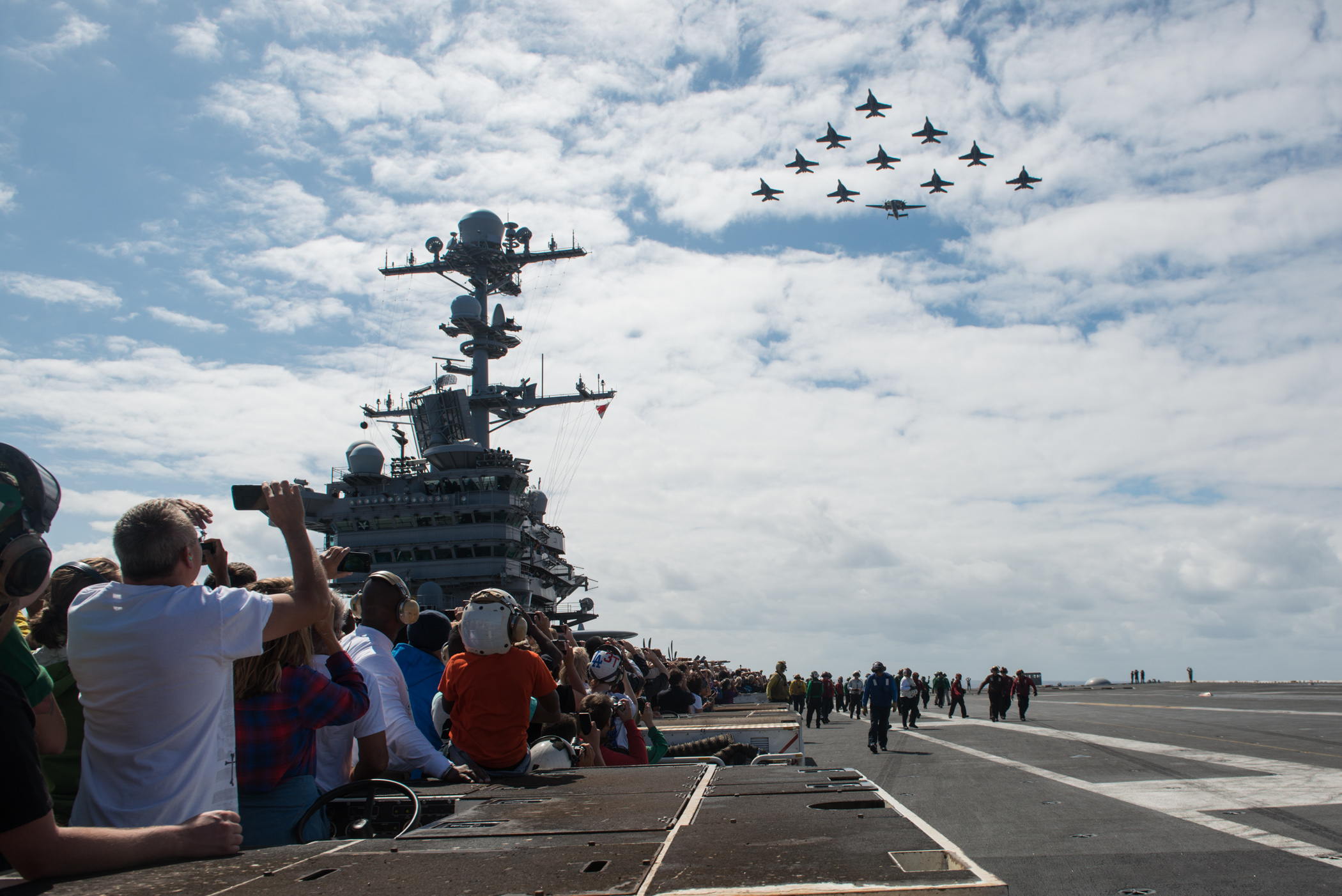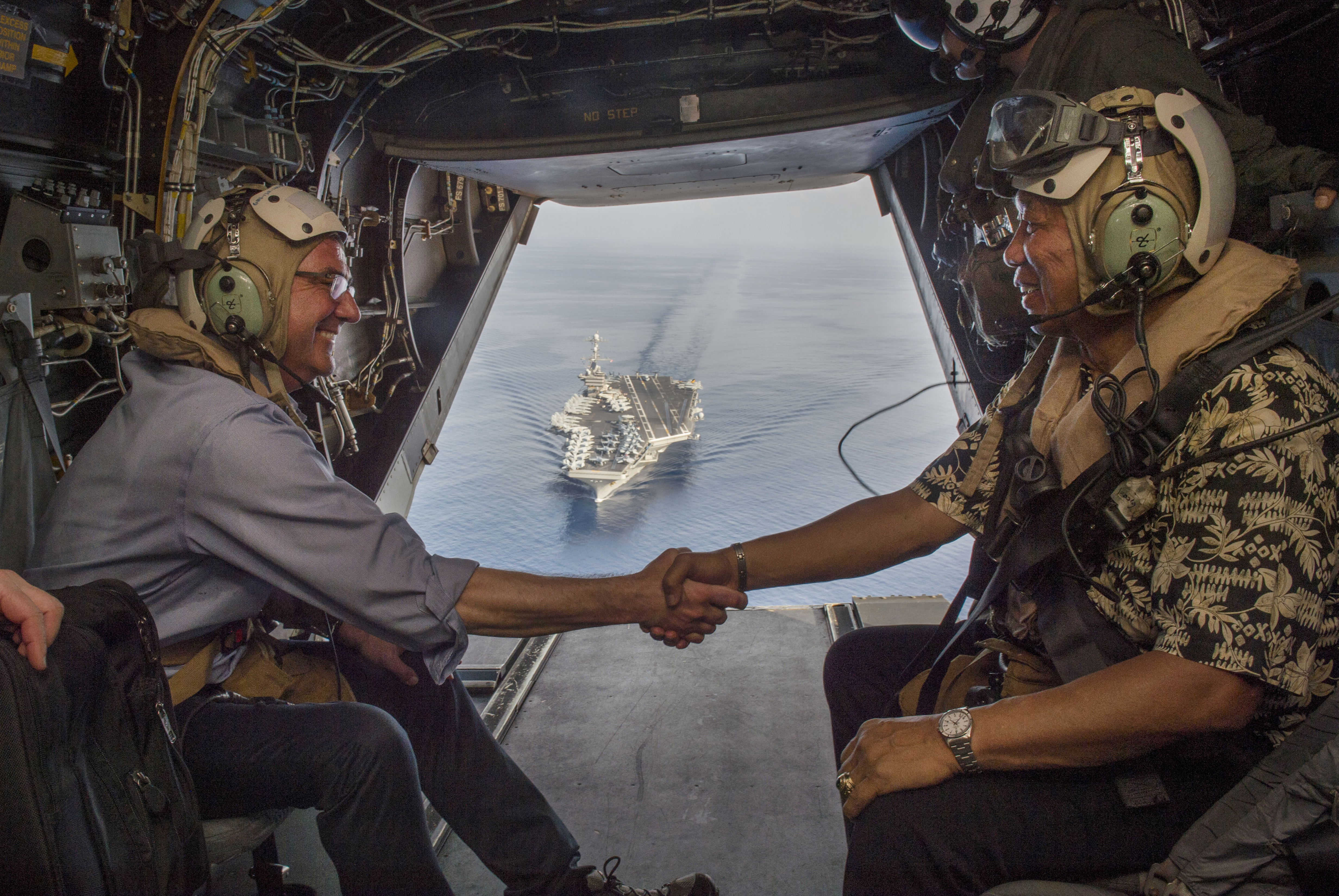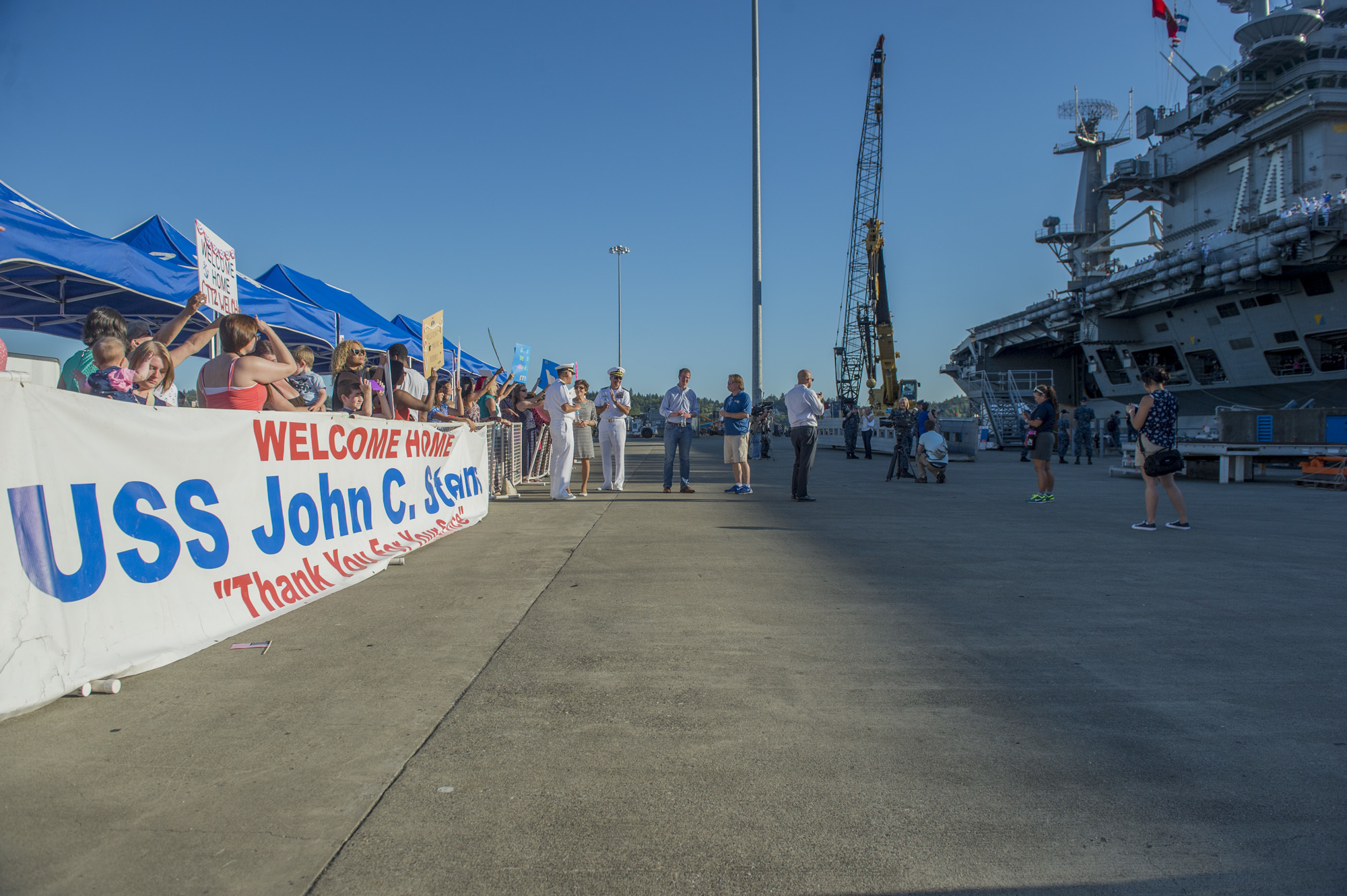
Aircraft carrier USS John C. Stennis (CVN-74) returned home to Bremerton, Wash., yesterday after seven months patrolling the South China Sea, serving as flagship of the first Great Green Fleet carrier strike group and participating in the Rim of the Pacific 2016 exercise.
The action-packed deployment included a rare opportunity to conduct dual-carrier operations to rehearse high-end warfare scenarios. Stennis’s Indo-Pacific deployment overlapped with USS Ronald Reagan’s (CVN-76) summer float from its home station in Japan, so the two met in the Philippine Sea to use their combined two carriers, nine large surface combatants and two carrier air wings to fly and sail in larger formations and simulate blue-water warfare operations.
The carrier strike group also operated with the Republic of Korea military during exercise Foal Eagle, the Indian and Japanese navies during exercise Malabar, and with a multinational coalition during RIMPAC 2016.

Stennis CSG also spent more than 60 days in the South China Sea, with Defense Secretary Ash Carter visiting the ship in April to call for China to cease aggressive behavior towards its neighbors.
“The crew of John C. Stennis should be proud of what they’ve accomplished this deployment and their families should be proud of them, just as I am,” Stennis Commanding Officer Capt. Greg Huffman said in a Navy news release.
“They carried out difficult and demanding missions far from home and carried them out with exceptional professionalism in the finest tradition of naval service. They are a magnificent crew.”
The carrier departed Jan. 15 and returned home Aug. 14 after dropping off the airwing at Naval Air Station North Island and its cruiser and destroyers at Naval Base San Diego on Aug. 9 through 11.

In total, Stennis performed over 8,500 aircraft launches and recoveries, conducted 30 replenishments at sea and hosted 580 distinguished visitors, including Vice President Joe Biden during RIMPAC 2016. The CSG ships overall sailed more than 66,000 nautical miles and aircraft flew more than 19,000 hours, according to a Navy statement.
The seven-month cruise was the carrier’s first since an unplanned surge deployment from August 2012 to May 2013. The ship then went to Puget Sound Naval Shipyard in Bremerton for a docking planned incremental availability, which wrapped up in November 2014 and included installation of the new Consolidated Afloat Networks and Enterprise Services (CANES). Stennis was the first aircraft carrier to deploy with CANES.





